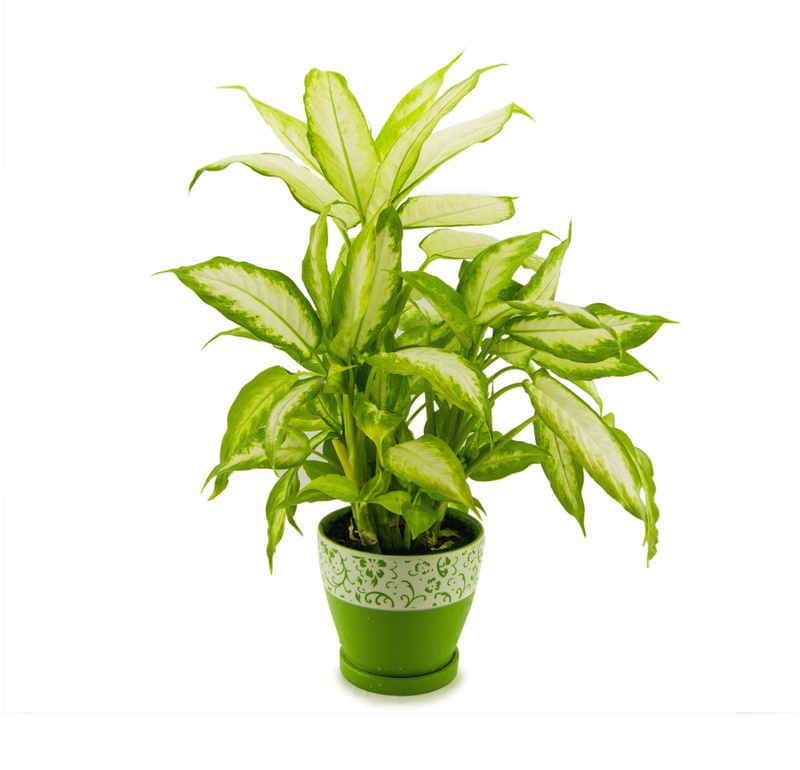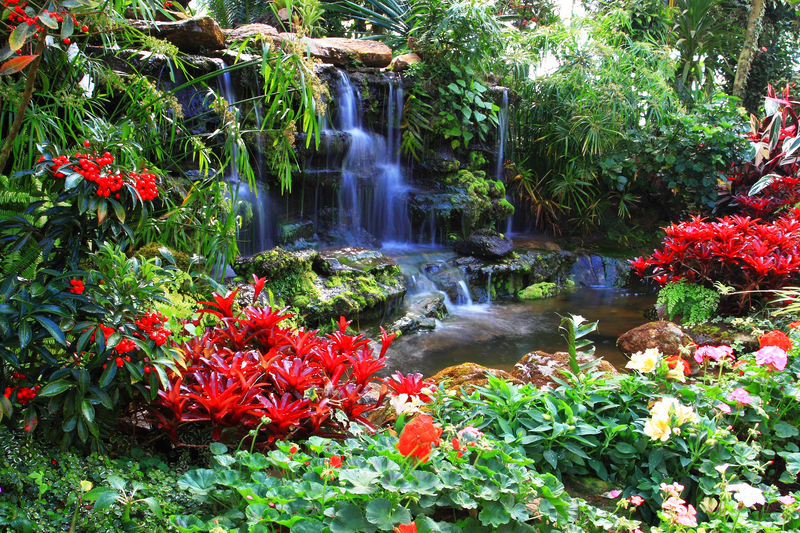Building a Dream Garden for Children's Play and Learning
Posted on 24/08/2025
Building a Dream Garden for Children's Play and Learning
A dream garden for children is much more than a green space--it is a magical environment where curiosity blossoms, creativity flourishes, and learning happens naturally. Well-designed play gardens foster physical, emotional, intellectual, and social growth through open-ended exploration. Building a dream garden for children's play and learning is one of the most rewarding projects you can undertake, whether at home, in a schoolyard, or in a community setting. In this comprehensive guide, we explore every aspect of creating an enchanting, safe, and educational outdoor haven for kids.

Why a Dream Garden Is Crucial for Children's Growth
Children today face a deficit of nature experiences due to urbanization and screen-oriented lifestyles. Outdoor play spaces offer stimulation that's hard to replicate indoors. Not only do gardens provide opportunities for physical activity, but they also nurture emotional resilience, observation skills, and environmental stewardship.
- Physical Benefits: Climbing, digging, and running promote motor skills and fitness.
- Cognitive Advantages: Sensory-rich environments enhance memory, attention, and problem-solving.
- Emotional and Social Gains: Shared activities improve cooperation, confidence, and empathy.
Key Components of a Children's Dream Garden
The Foundation: Safety First
Any outdoor play space for children should prioritize safety from the outset. Ensure the site is free of hazards, has secure boundaries, and allows clear sightlines for supervision. Use non-toxic plants and materials, soften hard surfaces with mulch, grass, or playground rubber, and provide safe shade from both trees and built structures.
- Fencing: Prevent children from wandering; fences also keep out pests.
- Natural Barriers: Hedges and dense shrubs are softer boundary alternatives.
- Soft Ground Cover: Choose grass, sand, or bark mulch for play zones.
- Allergen Consideration: Avoid plants known for inducing allergies or toxic properties.
The Heart of the Garden: Play Zones
The goal is to create areas for diverse play experiences. Children need variety--active, creative, sensory, and quiet zones--to support well-rounded learning and development.
- Active Play Area: Space for running, jumping, and playing catch. Include safe climbing structures or gentle slopes.
- Imaginative Play Zone: Install forts, teepees, or fairy gardens for role-play.
- Sensory Paths: Encourage barefoot walking across pebbles, logs, sand, and different textures for tactile learning.
- Gardening Beds: Raised beds or little plots where kids can plant, tend, and harvest their own vegetables and flowers.
- Water Play: Splash pads, shallow fountains, or hand pumps offer endless exploration, while teaching water safety.
- Art and Craft Corner: Tables for painting, mud pies, or nature-inspired crafts enrich creativity.
Choosing Child-Friendly Plants
Nothing delights children like interacting with living things. Select a variety of child-safe, sensory-rich, and wildlife-attracting plants to stimulate interest and provide hands-on learning experiences.
- Edible Plants: Strawberries, cherry tomatoes, and herbs are rewarding and safe to taste.
- Aromatic Plants: Lavender, mint, and lemon balm offer pleasant scents and opportunities for sensory games.
- Touch-Friendly Foliage: Lamb's ear and soft grasses invite gentle exploration.
- Flower Diversity: Sunflowers, marigolds, and nasturtiums add color and attract butterflies.
Tip: Teach children not to eat anything in the garden unless an adult gives permission, and regularly check for any newly-introduced weeds or toxic plants.
Encouraging Learning Through Play
A garden for learning and play should integrate elements that naturally invite investigation and discovery. Here are ways to foster a love of science, art, and practical skills:
- Mini Wildlife Habitats: Install bee hotels, butterfly puddling stones, or a bird feeder to watch and document visiting creatures.
- Weather Station: Include simple rain gauges, wind vanes, or thermometers to observe and record natural changes.
- Composting Area: Provide a child-sized compost bin to learn about recycling organic waste and the life cycle of plants.
- Seasonal Observations: Use the garden to teach about the changing seasons, plant lifecycles, and weather patterns.
- Story Corners: Add a shaded nook with cozy seating for reading, storytelling, or quiet contemplation surrounded by nature.
Creative and Messy Play
A dream garden for children's play encourages getting hands--and sometimes clothes--dirty. Allow sand play, mud kitchens, and water features where possible; these unstructured activities are vital for problem-solving and experimentation.
- Mud Kitchen: Provide old pots, pans, and utensils for pretend cooking and potion-making.
- Sand or Gravel Pit: Keep digging and building fun with buckets, spades, and hidden treasures.
- Loose Parts: Gather sticks, pinecones, stones, and logs for building and designing.
Design Principles for a Magical Children's Garden
Child-Focused Design: See the Space from Their Eyes
In a garden for children's play and learning, design elements need to suit children's scale and perspective. Paths should be wide enough for trikes, with gentle twists to incite exploration. Incorporate hidden nooks and circular gathering areas.
- Secret Spaces: Tunnels, willow domes, and hidden benches spark imagination.
- Multi-Sensory Features: Wind chimes, water gurgles, and fragrant flowers enhance the sensory appeal.
- Accessibility: Ensure every area is accessible, including for children with mobility aids or disabilities.
Flexible and Evolving Play
The best kids' gardens evolve with children's ages and interests. Modular play equipment and changeable layouts ensure the garden remains stimulating for years.
- Moveable Elements: Use portable benches, planters, and tents.
- Seasonal Decorations: Encourage children to help decorate with crafts, painted stones, or wind spinners.
- Continuous Planting: Involve children in crop rotations, flower planting, and annual upgrades.
Sustainability and Eco-Friendly Practices
Model earth-friendly gardening by incorporating sustainable practices into your dream playground garden for children:
- Water Conservation: Install rain barrels, drip irrigation, and teach hand watering with watering cans.
- Wildlife Habitats: Create brush piles, bug hotels, and pollinator patches.
- Organic Gardening: Forego pesticides and use natural soil amendments.
- Native Plants: Prioritize plants adapted to your local climate for a low-maintenance, resilient landscape.
Parent and Community Involvement
A truly sustainable children's educational garden thrives on community. Invite neighbors, classmates, and families to lend a hand:
- Family Gardening Days: Schedule regular times for group planting, weeding, and harvesting.
- Workshops and Classes: Host educational sessions on composting, wildlife, or cooking with garden produce.
- Garden Clubs: Create opportunities for shared responsibility, learning, and celebration.
Encouraging Ongoing Engagement
Hang a chalkboard or message board near the entrance for sharing garden news, weather reports, or blossoming plant discoveries! Encourage children to document their observations through journals, drawings or photography.
Step-by-Step Guide to Building Your Dream Garden for Kids
1. Plan Your Space
- Draw a rough map of the garden area, noting sun and shade, existing features, and available space.
- List activities you'd like to support: climbing, gardening, crafts, etc.
2. Gather Inspiration
- Visit local gardens, schools, or nature centers for ideas.
- Browse books and online galleries dedicated to children's gardens.
3. Involve Children
- Ask for their wish lists and favorite plants.
- Let them help design areas or paint garden art.
4. Prepare the Ground
- Clear debris, remove hazardous materials, and grade slopes for drainage.
- Lay safe surfaces in high-traffic play zones.
5. Install Play and Learning Features
- Begin with core structures, such as raised beds, paths, and forts.
- Add art stations, compost bins, and loose part play spaces.
6. Plant and Mulch
- Follow a planting plan for year-round interest and easy care.
- Mulch beds to suppress weeds, keep soil moist, and soften falls.
7. Maintain and Grow
- Establish a regular schedule for watering, weeding, and repairs.
- Rotate crops and upgrade play features each season.
Common Mistakes to Avoid in Children's Gardens
- Overcrowding: Don't try to include every idea in a small space--leave room for open play.
- Ignoring Sun Exposure: Too much shade or sun can make areas unusable at certain times.
- Using Unsafe Materials: Avoid pressure-treated lumber (unless child-safe) or recycled items with sharp edges.
- Neglecting Maintenance: Gardens need regular care to remain safe and enjoyable.
Balancing Play and Learning in the Dream Garden
The most successful dream gardens for children seamlessly blend free play with structured learning opportunities. Aim for a balance of:
- Open-ended play: Loose parts, sand, and water for creativity.
- Guided activities: Planting days, craft sessions, and science observations.
- Quiet reflection: Seats for reading or simply enjoying the garden world.

Conclusion: The Lasting Gift of a Children's Dream Garden
Creating a children's play and learning garden is an investment in every child's future. It provides a safe, joyful space to grow and learn, fosters an appreciation for nature, and supports a healthy lifestyle. With thoughtful design, ongoing involvement, and respect for children's needs and rhythms, you can build a dream garden that is truly enchanting, educational, and sustainable.
Whether your dream garden occupies a small balcony or a sprawling backyard, every element contributes to a child's discovery and delight. Begin your journey today, and watch imaginations--and plants--bloom!
Frequently Asked Questions About Building a Dream Garden for Children's Play and Learning
What is the best size for a children's garden?
Any size can work! Even a small area can pack in wonder and discovery. Focus on creating zones and features suited to your available space.
How do I ensure the garden is safe for all ages?
Include only non-toxic plants, soft ground covers, and age-appropriate structures. Keep sharp tools stored away and maintain clear supervision.
Can a children's learning garden be low maintenance?
Absolutely! Choose hardy, native plants, mulch beds, and incorporate automation like drip irrigation to minimize upkeep.
How can I maintain children's interest in the garden year-round?
Rotate activities and crops with the seasons, invite them to journal changes, and celebrate small garden milestones with events or workshops.
Your dream garden for children's play and learning awaits--start building a world of exploration, friendship, and growth today!

